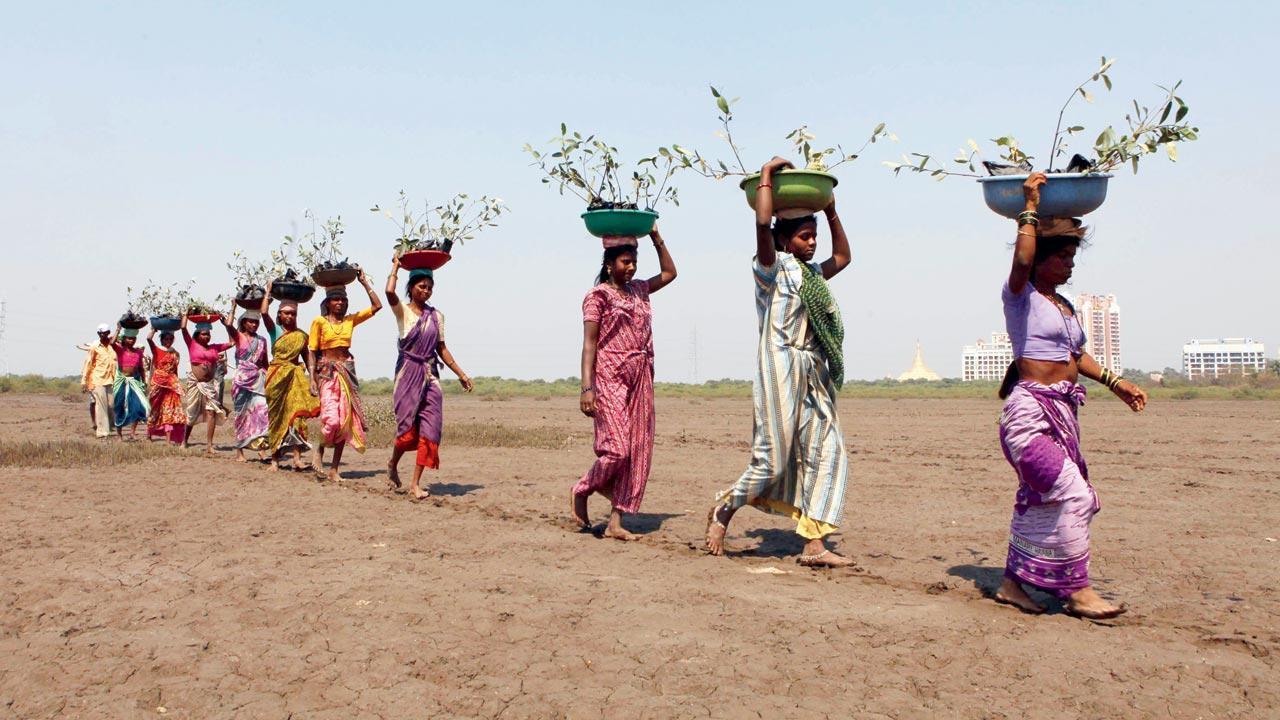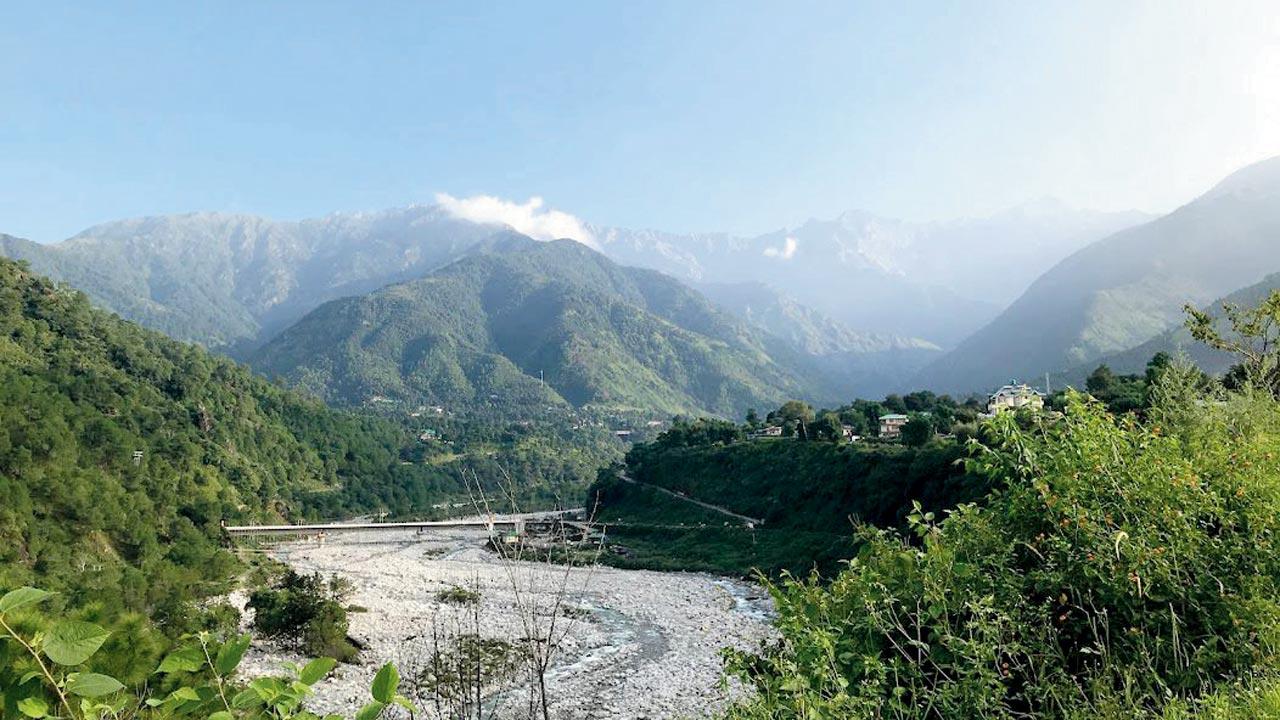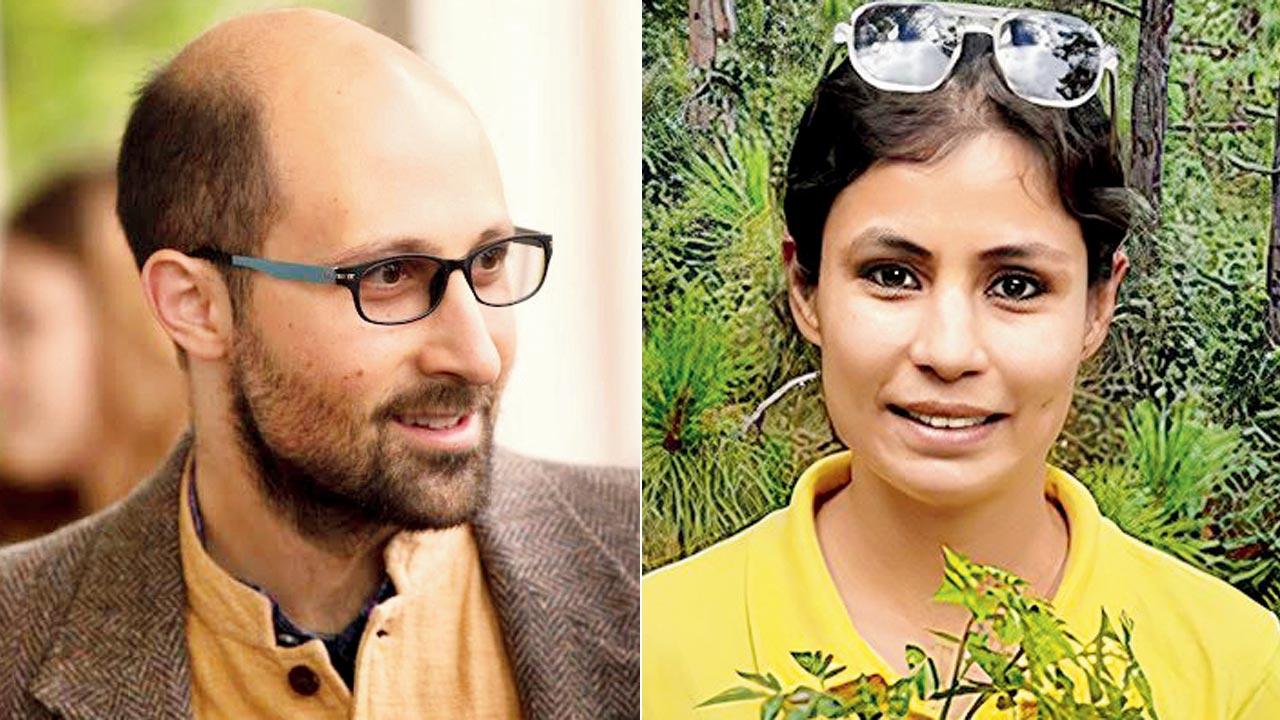India is at second spot in the global tree plantation race. But a Florida University-backed study in Himachal, based on data from 50 years, suggests that ambitious plans to increase carbon storage neither ups forest cover nor supports livelihoods

The forest department planted 33,000 mangrove saplings spread over more than 30 hectares of barren land in Charkop village, Kandivli, in March 2013. Pic/Getty Images
The earth is home to over three trillion trees, and India has significantly contributed to this. According to Plant for the Planet’s World Tree Map, India ranks second highest in the world, having planted over 2,159,420,898 trees. But despite this impressive statistic, some researchers and practitioners have raised concerns about potential negative impacts of large-scale tree plantation programmes on vulnerable local people and diverse ecosystems.
ADVERTISEMENT
A new study—conducted by a team that included researchers from Florida State University, University of Chicago, and the Centre for Ecology Development and Research, Dehradun—has found that large-scale tree plantations may not improve forest cover. The researchers used satellite imagery to study two aspects of the plantations—forest canopy cover and forest composition. The paper titled, Limited effects of tree planting on forest canopy cover and rural livelihoods in Northern India, was published on September 13 in Nature Sustainability. It focuses on plantations done in Himachal Pradesh’s Kangra from 1965 to 2018. Eric Coleman, associate professor of Political Science, Florida State University, and also co-author of the paper, says, “Tree plantations in Kangra do not exhibit significantly greater canopy cover in the years after a planting event. This means that planting trees does not seem to have significantly improved carbon storage. The forest composition has modestly shifted to more needleleaf varieties than broadleaf in the years following planting. This suggests that while the overall canopy cover isn’t changing due to plantations, the types of trees is changing to needleleaf varieties.”
 The study, which was published on September 13, focuses on plantations in Himachal Pradesh’s Kangra between 1965 and 2018
The study, which was published on September 13, focuses on plantations in Himachal Pradesh’s Kangra between 1965 and 2018
In short, after the tree composition from broadleafed varieties was shifted, local people who used it for fodder and firewood are left in a quandary as the newer needleleaf species are not useful to them. “Policymakers often set very ambitious tree planting goals that draw headlines. However, they and other international donors often fail to appreciate the difficult process of growing trees. For plantations to have a chance at success, more care needs to be taken to plant the right species in the right places, followed by arrangements in governance, after the initial planting event,” Coleman adds.
The team has found that tree planting is not a silver bullet to fight climate change. “Ambitious tree planting targets that compel massive planting over a short time may fail. While the evidence we produce is geographically limited, the strength of this evidence should give pause to policymakers [national and international] to not simply assume tree-planting projects will sequester great amounts of carbon. Policymakers in India should consider this evidence when allocating scarce resources to fight climate change. Given the limited benefits of these projects, one must consider whether continuing to plant trees makes sense,” Coleman explains.
 Eric Coleman
Eric Coleman
Forrest Fleischman, associate professor of environmental and natural resource policy at the University of Minnesota, spent nearly a year in Vidarbha, Maharashtra, and Telangana, studying how forest officials went about their tasks, what they did on a daily basis, and how they interacted with local communities and other stakeholders during his doctoral dissertation. “Something that was striking to me right away was that whenever I asked forest officers about joint forest management [JFM], they would take me to a plantation site outside of a village. I gradually realised that while the academic literature and the formal policies emphasised JFM as a programme about shared responsibilities, forest officials largely saw it as a programme that funded plantations. This wasn’t something I’d read about in academic literature.”
Then, he noticed that a lot of the plantations were doomed to failure. “I spent one long day with a range forest officer searching for teak plantations that records showed had been planted in his range 20 years prior, but we couldn’t find any evidence of them. In other places, I saw scrubby and degraded natural forest bulldozed to create short-rotation eucalyptus plantations that could be sold for paper-making. In many cases, newly planted trees were grazed by goats or cut up for making poles as soon as they were big enough. In other places, I saw successful restoration projects,” Fleischman tells us.
According to the paper, as of 2015, the extent of global tree cover from planted forests is estimated at 280 million hectares and 12 million hectares lie within India. Restoration ecologists have cautioned that tree planting should not be equated with forest restoration, but instead countries should consider diverse restoration strategies in diverse ecosystem. The team also thinks that compensatory afforestation as a mitigation measure doesn’t always reap benefits. Fleischman informs, “It is deeply flawed. A mature forest is cleared in one area, and we propose to replace it with a new forest somewhere else, but it might take decades for that forest to replicate what was lost. In short, the basic idea that we can compensate the loss of a mature natural forest in one place by constructing an artificial one in another place is a sham, unless you are willing to wait a very long time for your results.”
 Forrest Fleischman and Supriya Patil
Forrest Fleischman and Supriya Patil
In India, he says, the word forest has two distinct meanings. “Forest is a land cover type consisting of dense trees, but it is also a legal category referring to land owned by the forest department. India is an incredibly diverse country and has many ecosystems that are not naturally covered with dense trees, but most intact natural lands are classified as forest and owned and managed by the forest department. When grasslands and savannas are lost, its not appropriate to replace them with a forest. But the laws on compensatory afforestation in India mix these categories up, and thereby encourage the conversion of ecosystems that are not naturally forests,” Fleischman warns.
The researchers, however, clarify that India does have examples of successful tree planting initiatives. Bikrant Tiwary is the first CEO of Grow-Trees.com. The social organisation has introduced projects in 23 Indian states and completed the plantation of over 9 million trees. Supriya Patil, environment expert, Grow-Trees.com, says, “The region around the Thane district has been facing deforestation in cyclic rounds for years. Our team has planted trees in the region to extend benefits not only to the village, but also to the city of Mumbai due to the proximity. In addition to this, several other plantation drives have been organised in Ramtek and Yavatmal districts to improve the environmental health, reduce man-animal conflict, and improve the living conditions of villagers and rural communities. Plantation of mixed species is followed during these drives as it balances the nutrient content of the soil, increases its nitrogen-fixing capability, produces root exudates, and provides protection from pests and diseases. This mixed bag includes fruit-bearing, medicinal, and timber species that are planted based on the soil, climatic condition, and need of the area. For instance, the project in Kalyan Taluka involved the plantation of karanj, jackfruit, chikoo, mango, acacia, teak, guava, and neem trees.”
After the first year of the plantation, independent auditors assess the project location and share a report with them. “After auditing the trees post one year of the plantation, our organisation also replants the dead saplings based on the survival rate shared by the third-party auditors,” she adds.
Aditya Gadkari, botanist with Wildnest, says, “Some phenomenal rainforest restoration work has been carried out by TR Shankar Raman and Divya Mudappa of Nature Conservation Foundation [NCF] near Valparai Plateau at Anaimalai hills since the last few years. Similarly, Gurukula Botanical Sanctuary has been working in Kerala and Vasanth Bosco has been doing restoration work near Ooty in Tamil Nadu. These are all super approachable, and have actual on-ground restoration experience.”
In the paper, researchers write that if tree plantations are continued, we should be thinking about how to involve local stakeholders in meaningful ways through all stages of the policy process. “Deciding where to plant, what to plant, implementing, monitoring and ongoing administration are important. We need to realise that forest dependent people are often burdened with land use restrictions imposed by such projects. They should have a say in what is planted and how these lands are managed,” Coleman concludes.
 Subscribe today by clicking the link and stay updated with the latest news!" Click here!
Subscribe today by clicking the link and stay updated with the latest news!" Click here!







